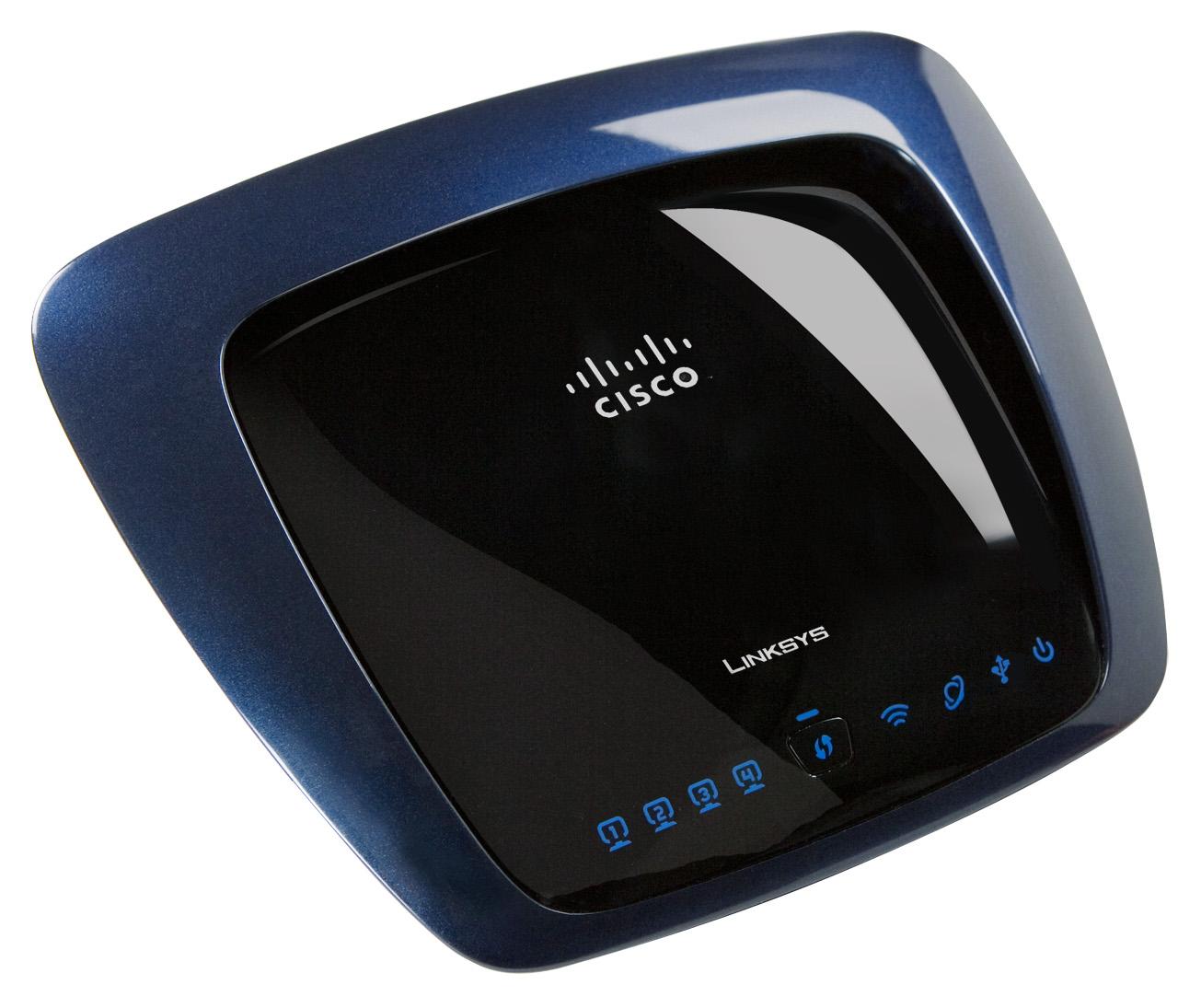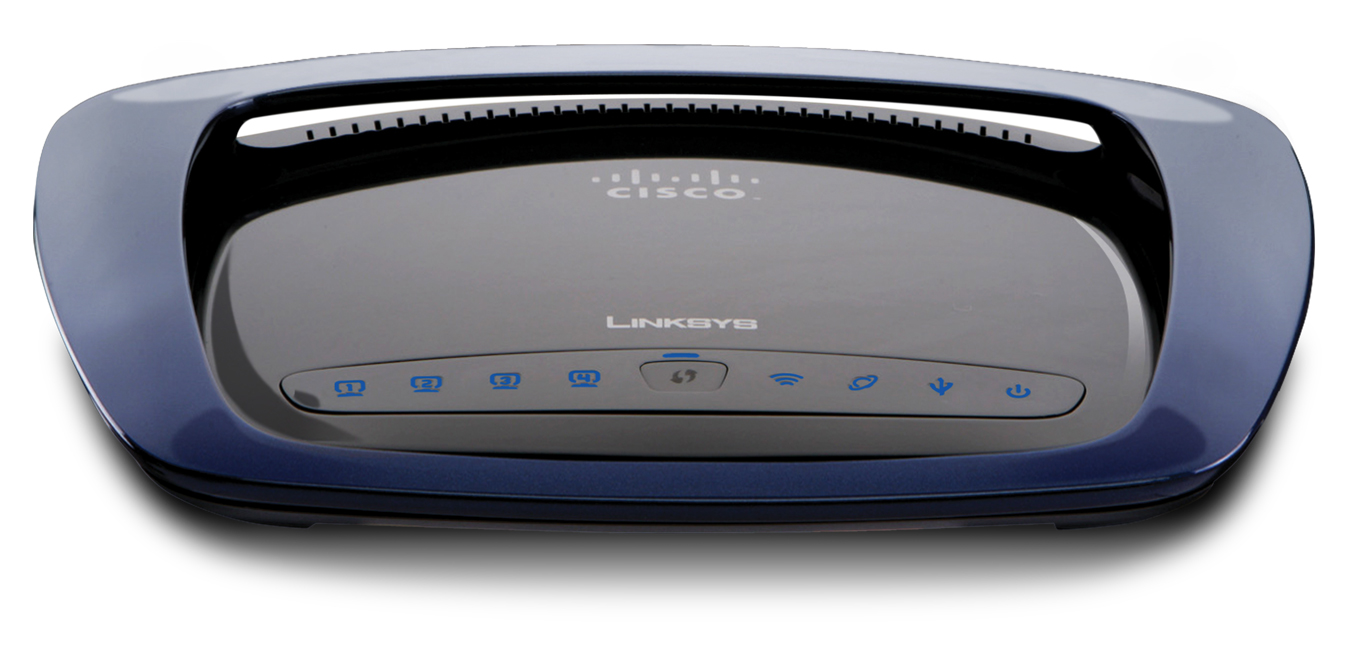Wireless Networking: Nine 802.11n Routers Rounded Up
Linksys WRT610N
Linksys has long been a popular home router brand. The products tend to be simple, durable, well-supported, and at least meet performance expectations. In working with prior Linksys models, we’ve had few complaints but also not many occasions to gush with praise. Just looking at the WRT610N ($169.99) out of the box, we wondered if things were about to change. This dual-band beauty doesn’t seek to distract with fancy LCD displays. Rather, a sleek profile, glossy and rounded like a fine sports car, conveys simple elegance and speed.
There are two kinds of dual-band routers: those that let you connect via 2.4 GHz or 5.0 GHz and those (like the WRT610N) that let you do both simultaneously. Simultaneous dual-band (SDB) doesn’t mean you get to bond both radios into one super-fast connection and get a 600 Mb/s router out of two 300 Mb/s functions. However, you can have different clients connecting to whichever frequency is better suited to the occasion. For example, you might want video streaming to a media extender running over 5.0 GHz, since there’s likely to be less traffic in this range, while general PC data goes across 2.4. Because of our test environment, we expected to see much faster performance on the 5.0 GHz band, but results showed similar numbers for both bands across several (but not all) tests. Perhaps this is why some people have written off SDB as an unnecessary expense. We disagree. In a setting crowded with 2.4 GHz traffic, having that full performance 5.0 GHz alternative can be a life-saver.
Under its gleaming hood, the WRT610N sports four gigabit Ethernet ports, custom QoS settings according to program and port range, and a single USB port for external storage. With this, you can create rights-based NAS, an FTP server, and a UPnP/DLNA media server. The WRT610N doesn’t dazzle with breakthrough features, but it covers all the basics, hits the extra server, QoS, and storage features power users want most, and, as we’ll see, has the performance goods that really justify its price tag.
Note: Just days before publication, Cisco unveiled its new E-series routers. The top-end model from this group is the E3000, which, except for a slight cosmetic change and the inclusion of Cisco’s Connect software (primarily for guest access and parental control setup), looks to be a complete repeat of the WRT610. In fact, Cisco Connect is simply a spruced up version of the Network Magic Basic software bundled with the WRT610. We can’t say for certain that the two models perform identically, but with both featuring six internal antennas in a 2x2 array configuration, an extreme similarity sure wouldn’t surprise us.
Get Tom's Hardware's best news and in-depth reviews, straight to your inbox.
-
deividast I want one of those Linksys :) I use now WRT54G and it's doing it's job, but it's a bit slow some times then transfering files from notebook to PC :)Reply -
vant I'm surprised the 610N won. Without testing, the general consensus is that Linksys sucks except for their WRT54s.Reply -
The testing is flawed in that there could be great variability in adapter performance, as admitted by the author. A true "router" comparison would use a common non-partial built-in Intel wifi link miniPCIe card to isolate router performance. Otherwise, too many variables are introduced. Besides, most ppl buy routers for routers, not in matching pairs since most ppl already own wifi laptops or adapters. Smallnetbuilders tested the Netgear WNDR3700 as one of the best performing routers on the market. Obviously this review unit is hampered by the Netgear adapter.Reply
-
vant kevinqThe testing is flawed in that there could be great variability in adapter performance, as admitted by the author. A true "router" comparison would use a common non-partial built-in Intel wifi link miniPCIe card to isolate router performance. Otherwise, too many variables are introduced. Besides, most ppl buy routers for routers, not in matching pairs since most ppl already own wifi laptops or adapters. Smallnetbuilders tested the Netgear WNDR3700 as one of the best performing routers on the market. Obviously this review unit is hampered by the Netgear adapter.Good point.Reply -
cag404 I just replaced my Linksys WRT600N with the Netgear WNDR3700. I have not used the WRT610 that is reviewed here, but I can say that the difference in routers is noticeable. The reason I replaced the router was that the WRT600N was dropping my port settings used to provide remote access to my home server, and I got tired of it. Wanted to try a different router so I went with the Netgear based on a favorable Maximum PC review. Glad I did. It has a snappier feel and I get a stronger signal throughout my two-floor house. The Netgear has not dropped my port settings for my home server yet. Also, I didn't like that fact that Linksys abandoned the WRT600N with no further firmware updates after about the first or second one.Reply -
pato Was the Linksys the V1 or V2 variant?Reply
Which firmware was installed on it?
I have one (V1), but am very unhappy about the signal range! I have it replaced with a WNDR3700 and have now a twice as strong signal as before! -
Would have been nice to see the WAN-LAN throughput/connections as well for wired connections, but I guess all people but me use wireless for everything nowadays...Reply

